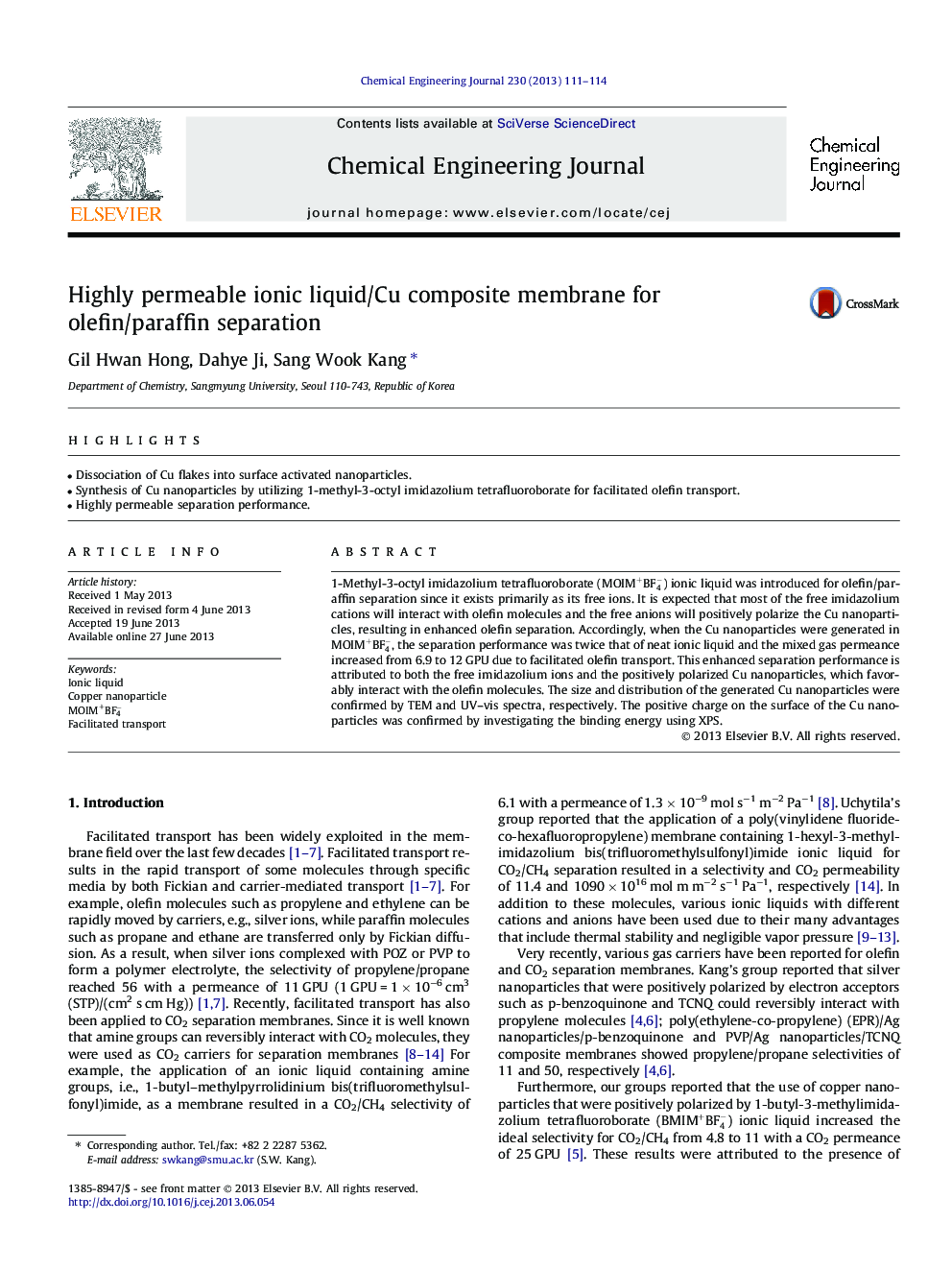| کد مقاله | کد نشریه | سال انتشار | مقاله انگلیسی | نسخه تمام متن |
|---|---|---|---|---|
| 148405 | 456411 | 2013 | 4 صفحه PDF | دانلود رایگان |

• Dissociation of Cu flakes into surface activated nanoparticles.
• Synthesis of Cu nanoparticles by utilizing 1-methyl-3-octyl imidazolium tetrafluoroborate for facilitated olefin transport.
• Highly permeable separation performance.
1-Methyl-3-octyl imidazolium tetrafluoroborate (MOIM+BF4-) ionic liquid was introduced for olefin/paraffin separation since it exists primarily as its free ions. It is expected that most of the free imidazolium cations will interact with olefin molecules and the free anions will positively polarize the Cu nanoparticles, resulting in enhanced olefin separation. Accordingly, when the Cu nanoparticles were generated in MOIM+BF4-, the separation performance was twice that of neat ionic liquid and the mixed gas permeance increased from 6.9 to 12 GPU due to facilitated olefin transport. This enhanced separation performance is attributed to both the free imidazolium ions and the positively polarized Cu nanoparticles, which favorably interact with the olefin molecules. The size and distribution of the generated Cu nanoparticles were confirmed by TEM and UV–vis spectra, respectively. The positive charge on the surface of the Cu nanoparticles was confirmed by investigating the binding energy using XPS.
Journal: Chemical Engineering Journal - Volume 230, 15 August 2013, Pages 111–114